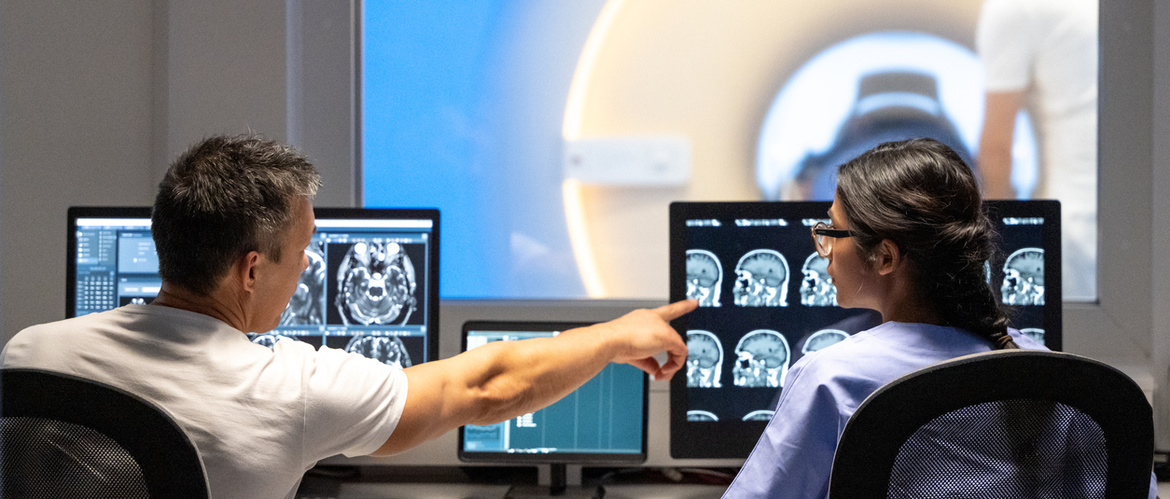Alzheimer’s disease is not part of normal aging. It is a brain disorder and not all people with cerebral amyloid deposition develop dementia. Expression of the phenotype depends on an individual’s genes and environmental exposures. A new probabilistic model of Alzheimer’s disease has therefore been proposed with three key variants, explained experts at ADPD2022.
Alzheimer’s disease is not part of normal aging. It is a brain disorder and not all people with cerebral amyloid deposition develop dementia. Expression of the phenotype depends on an individual’s genes and environmental exposures. A new probabilistic model of Alzheimer’s disease has therefore been proposed with three key variants, explained experts at ADPD2022.
The three key variants of Alzheimer’s disease
New research has led to the differentiation of three types of Alzheimer’s disease — the rare autosomal dominant form and two more common sporadic forms,1 said Professor Giovanni Frisoni, University of Geneva, Switzerland.
Not all people with cerebral amyloid deposition develop Alzheimer’s disease
The deterministic four-step pathophysiologic model of Alzheimer’s disease (AD) is amyloid deposition in the cerebral cortex, followed by an increase in hyperphosphorylated tau protein, neurodegeneration, and memory loss. However, this model applies only to people with autosomal dominant AD, explained Professor Frisoni.
Sporadic cases of AD are much more common than autosomal dominant AD, and Professor Frisoni and his colleagues have identified two sporadic variants, one related to apolipoprotein E ε4 (ApoE ε4) and one unrelated to ApoE ε4.
Lifestyle influences the expression of the phenotype of sporadic Alzheimer’s disease
Environmental exposures (ie, stochastic factors) and lower-risk genes mean that not all people with cerebral amyloid deposition develop ApoE ε4-related and ApoE ε4-unrelated sporadic AD,1 said Professor Frisoni, with lifestyle influencing expression of the phenotype.
Professor Frisoni and his colleagues have therefore proposed a probabilistic model for AD in which genes and environmental factors determine the penetrance of the AD trait.1
Strategies to lower the risk of Alzheimer’s disease
40% of cases of Alzheimer’s disease might be prevented through strategies to modify 12 risk factors
Dementia is a brain disorder and not part of normal aging, said Professor Miia Kivipelto, Karolinska Institute, Stockholm, Sweden.
It is never too early to start to prevent AD, and 40% of cases might be prevented through strategies to modify 12 risk factors,2 she added. These risk factors are obesity, high blood pressure in mid-life, diabetes, excessive use of alcohol, smoking, air pollution, poor education, physical inactivity, depression, social isolation, hearing loss, and head injury.
A healthy lifestyle lowers the risk of dementia, which is a brain disorder and not part of normal aging
The “Six pillars of Brain Health,” advocated by the Cleveland Clinic to address these risk factors are therefore:
- Physical exercise
- A healthy diet
- Controlling medical risk factors such as hypertension, diabetes, high cholesterol, and smoking
- Regular sleep and relaxation
- Mental fitness and stimulation
- Social interaction and engagement3
The changing landscape of early Alzheimer’s disease diagnosis
In 2018, the National Institute on Aging and Alzheimer’s Association Research Framework proposed the use of biomarkers for amyloid beta deposition, pathologic tau, and neurodegeneration for defining and staging AD for research purposes.4 However, the new probabilistic model for AD means that people can test positive for these biomarkers but will never develop AD,5 said Professor Frisoni.
Biomarkers alone are not enough to diagnose early Alzheimer’s disease
It has therefore been recommended that:
- A diagnosis of Alzheimer's disease should be restricted to people who have positive biomarkers in addition to specific Alzheimer's disease phenotypes
- Cognitively unimpaired individuals with positive biomarkers should be considered only at risk for progression to Alzheimer's disease5
This industry symposium was funded by Biogen.
Our correspondent’s highlights from the symposium are meant as a fair representation of the scientific content presented. The views and opinions expressed on this page do not necessarily reflect those of Lundbeck.




